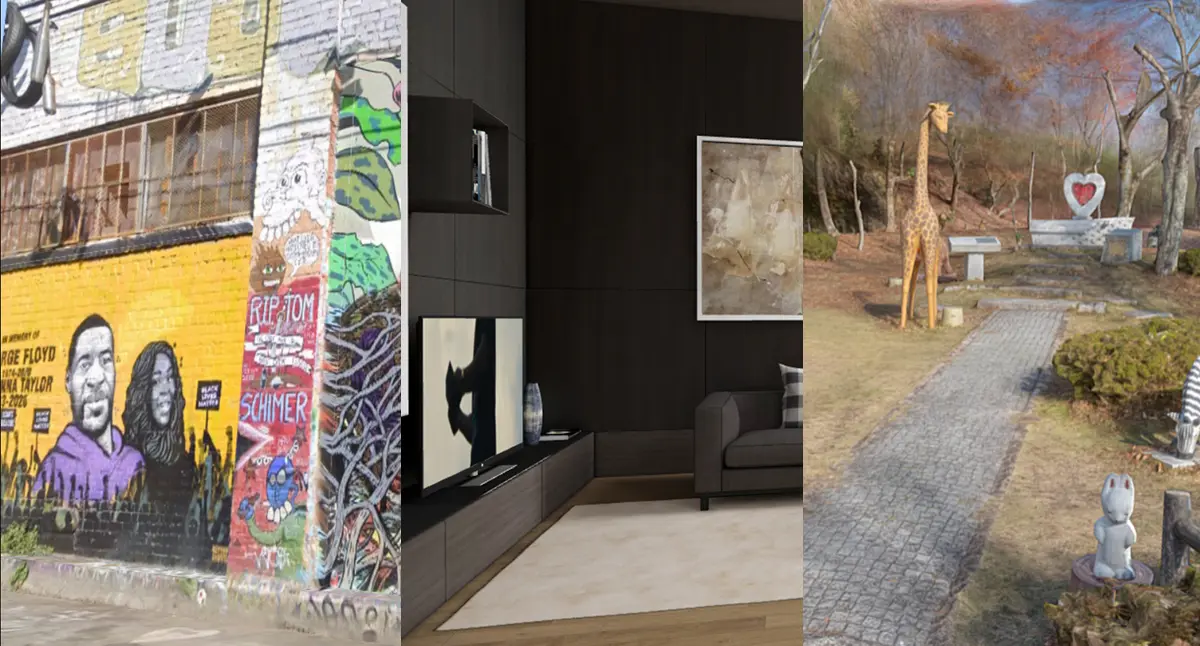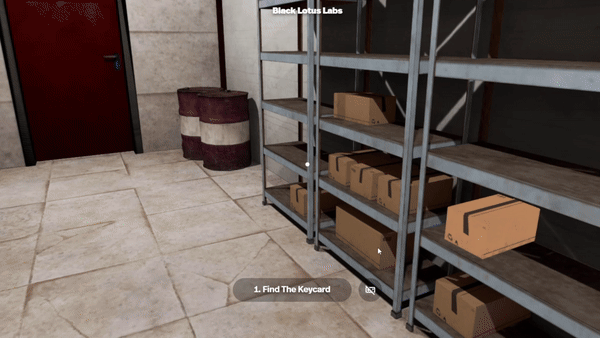
In the Metaverse Business, Where is the Value? Part II: (Designing Meaningful Interactions)
The Metaverse. Does it have any business value?
With stellar world design, the audience is hooked. How do you get them to stay in it, and for longer? The activities and interactions of the world become the next key. 3D is a magical medium for interaction design. With controllers, hand tracking, and physics (and many others), all of these elements can be combined to create some truly immersive experiences.
Imagine a world that looks like an arcade, you can walk over and play table tennis, play pool, or play darts all within the same space. In addition, you can play solo, with a human, or a computer. There is a vast array of activities like this that will keep users perpetually busy in this vibrant world.
Now with these 2 pieces, 3d worlds (spatial internet) gains a lot of value for a variety of participants. Imagine a brand (who sells vacuum cleaners) having an experience in a living world where you get to use a vacuum to collect coins similar to how you would vacuum in real life. But it doesn't stop there, by including a variety of activities which are all different and apply to the same theme of cleaning, they can create amazing experiences for users while incorporating their products.
Imagine playing dodgeball or flag football? All through a spatial browser. The point is, interaction design and the base code behind it will be very valuable to a myriad of parties. Visualbrowser builds value here by producing code that can be used in house or shared with other parties interested in creating and using these experiences.
Value Principle 2: Meaningful Interactions

Black Lotus was a level we created using for VisualBrowser's mobile and desktop experiences to test simple interactions that could add meaning and value to a user's experience. Dr. Hartmann has been working on a super secret project in Black Lotus Labs and made a discovery that could change mankind. Problem is she's trapped in the lab. Can the user help her escape?
By presenting a prompt like this, we are able to create an experience with meaningful interactions that has the user completing the actions just like Dr. Hartmann would do to escape the lab. This simple experience involves finding a keycard in the storage room. The level doesn't tell you where the keycard is and just like a game, the user has to possess problem solving skills to locate the odd object that stands out. Once they figure it out, they will see an activation message prompting them to move the object to reveal the keycard. That whole interaction has the user immersed in the experience the entire time.
The script behind this interaction is picking up and object and putting it back down. Now we combine it by adding different types of objects and we have an interaction that allows the user to search for something of interest by picking other objects to reveal the object of interest.
What we are proposing with meaningful interactions is a codebase and system to generate actions similar to this but vary enough to produce meaningful interactions for our clients and their audience. By varying these interactions and combining them with other interactions, we can create unique valuable experiences for the audience of interest by providing education and entertainment value that surpasses anything currently available on the market.
VisualBrowser: Interaction Framework
We are building an interaction framework where the code can be reused but the experiences generated are unique with the goal of users spending more time on the site and with these experiences. Currently here are the features of the platform:
Desktop + Mobile Interaction Framework (Updated 06/19/2024)
- Quest Objectives The quests are the heart of a 3D experience. It allows users to interact with the site and spend valuable time with it without feeling lost/confused on what to do next.
- Event Triggers Event Triggers are zones within a 3D experience that inititate an experience or event. These triggers are used to present information modals and start/complete quest objectives.
- Audio Narration A Narrator is always present to guide you to the next step or objective in the experience. They are also there to relay very important information about the level to the user.
- Information Modal An info modal is a simple menu that shows an image, title, and text about an object of interest in a level. These are text based interactions that have you read them to gain information.
- Image Slideshow An image slideshow is a carousel of photos accompanied by a title and description to display sequential pieces of information together. If you have a topic that takes more than one slide to explain, this is perfect for presenting that information to the user.
- Videos Powered by YouTube, the videos allow you to view information using a video module. This could be the way to attach a video already realated to the subject to enhance the experience or to use it as cutscenes in a narrative experience.
- Quiz A quiz is part of the obstacle interactions we implement as part of our experiences. Since our experiences regardless of category tend to be narrative based, we want the users to help the main characters in the narratives overcome certain obstacles to achieve their goals. Quizzes is one of the ways the users can help the characters overcome the obstacles.
Virtual Reality (VR) Interaction Framework (Updated 06/19/2024)
- Event Triggers Event Triggers are zones within a 3D experience that inititate an experience or event. These triggers are used to present information modals and start/complete quest objectives.
- Audio Narration A Narrator is always present to guide you to the next step or objective in the experience. They are also there to relay very important information about the level to the user.
Some interactions are level specific like object interactions. Those kind of interactions are specific to the actual objects that make up a scene. We will explore those and update this guide as we see fit in the future.
Interactions are Platform Specific
Interactions are based on the input capabilities of the experience. This means desktop experiences will be different from mobile phone experiences and VR experiences. The more inputs there are, the more interactions you can create. This means VR experiences will come with a lot more interactions making them the best platform for this kind of experience. We also understand everyone will not try this product out first on a VR headset so we adopted a mobile first approach. By creating unique experiences on the phone, we can encourage our audience to try our their Virtual Reality counterparts growing the userbase we have using that platform.
Our platform is also available on desktops for those who want to access it using a keyboard and mouse. What we are doing here at VisualBrowser is figuring out how we can mix narratives & characters (story) + interactions + 3D worlds = entertaining experiences that will have our users using the platform for a very long time during each session and keep them coming back day after day for more. By properly designing a framework around interactions and crafting unique and creative interactions we can keep making levels that will attract and grow a sizable audience.
If you have any suggestions for interactions we should add to the experiences you would like to see made, Please join our discord to partake in the conversation and let us know.
Written and Published on May 20th, 2024: VisualBrowser is best experienced on Mobile Devices as of right now. Desktop, Tablet, and VR versions are being worked on.